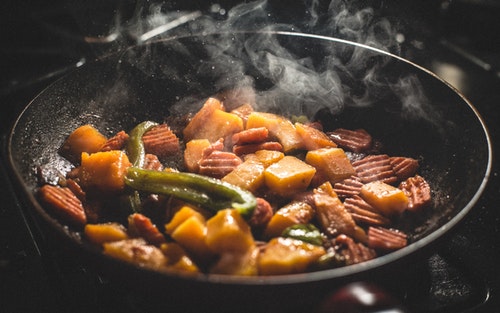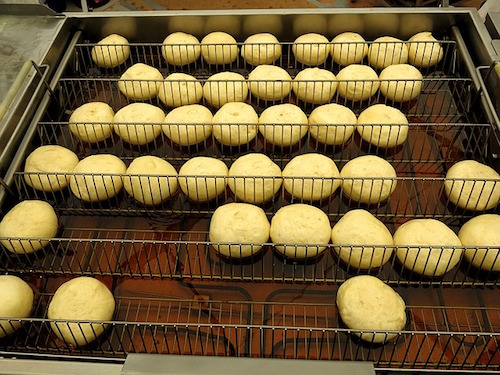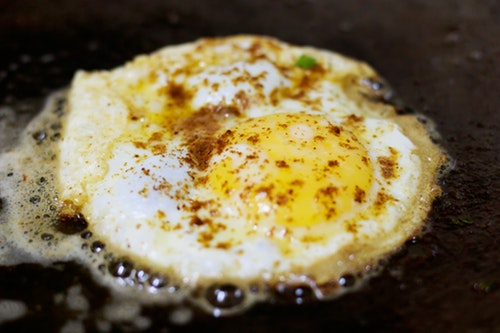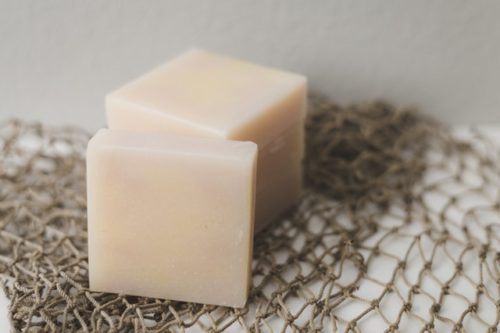As restaurant owners, we end up with a lot of oil at the end of the day from making food. These cooking oils can include canola, olive, corn, sesame or vegetable oil.
You can’t pour cooking oil down the sink drain. If you pour this oil down the drain or kitchen sink, it could have potentially terrible – and expensive – consequences. For instance, it can clog the kitchen’s sewage pipes. Therefore, it’s important to know how to dispose of cooking oil properly.
Here’s what commercial kitchens can do to dispose of used cooking oil.

Contract the Services of an Oil Recycling Company
According to the US EPA, somewhere between 380 and 800 million gallons of waste oil are collected by professional oil recycling services for reuse. Recycling companies collect and reuse cooking oil and grease disposal for various uses.
These include:
- As an additive in manufactured products
- For use as a lubricant
- For use in bitumen-based products
- To help release products from their molds
- For use in industrial burners
It’s a great idea to recycle cooking oil.
Save the Used Oil for Future Cooking

Leftover and cooled cooking oil and fat isn’t entirely unusable. It can still be used in future cooking to add depth and flavor. Many vegetable and animal fats can be strained and then stored in a sealed container in a dark place.
Use cheesecloth or a coffee filter to strain the oil. Straining removes any particles and crumbs. Pour it in an airtight, sealable container and then store it in a refrigerator or a dark place.
For saturated fat that has hardened, let it liquefy at room temperature. Cover a glass container with either cheesecloth or paper towel. Pour the fat in the container. Finally, store the sealed contained in a fridge or a dark place for later use.
The same process can be used for unsaturated fats. However, there is a caveat. The unsaturated fats, such as peanut, corn, or vegetable oils, should not exceed the smoking point of the oil. The smoke point of an oil or fat is the temperature at which oil begins to produce a continuous bluish smoke and becomes clearly visible.
Here are some smoking points of common cooking fats and oils.
When the oil exceeds its smoking point, it can become bitter. Moreover, the oil can also be a health risk due to free radicals.
Use the Fat Trapper System
The Fat Trapper System is an eco-friendly way to properly dispose cooking oil and grease. It effectively holds oil in an odor-free, sanitary package. The Fat Trapper System is essentially a plastic container with an aluminum foil bag.
Store the oil in the aluminum foil bag. Once full, just fold the bag and either throw it away or have an oil recycling service collect it.
Mix the Oil with an Absorbent Material

If you really just want to get rid of your oil, you can mix it with an absorbent material. Absorbent materials include flour, cat litter, and sawdust. By doing this, you won’t have to worry about the oil spilling all over the place.
If it’s not too much oil, you can also toss it in a trash bag with other items that can absorb it, like paper towels and food scraps.
Donate Your Cooking Oil
Nowadays, an increasing number of cities are asking residents, schools, and restaurants to donate their used frying and cooking oil. The city uses the cooking oil to make biodiesel.
For instance, San Francisco uses biodiesel to power up some of their city’s fleet. To check if your city has designated drop off sites where you can donate your cooking oil, simply Google “cooking oil donation [Name of Your City].”
Make Soap

You can only do this if the container has one type of oil in it. Before you begin, the following materials are necessary:
- Protective gloves
- Safety glasses
- Thick paper for packaging
- Wooden drawers
- Wooden stick
- Metal bucket
Once you have gathered all these materials, follow this step-by-step guide here.
Upcycle the Cooking Oil
There are many ways you can use leftover cooking oil besides those mentioned. Here are some of the ways:
- Add it to your compost pile. Cooking oil is a delicacy for earthworms. So, if you have a compost heap, add a little of the oil. Too much will kill the earthworms. The compost produced can be used for a multitude of uses.
- Make bird food and a bird feeder. To survive in the cold, birds need additional calories from food. To make bird feeders, stuff solid fat into old stockings then hang them outside. Your feathered friends will appreciate it!
- Use it for lighting. You can bring a warm glow to any space using leftover oil. Vegetable oils, such as olive oil, work best.
- Use it to kill weeds. Just place it in a spray bottle and spray those unruly nuisances away.
- Make biodiesel fuel. You can convert leftover oil into biodiesel fuel via some kits. Biodiesel is a desirable substitute for petroleum because it supposedly emits less harmful greenhouse gases.
Bottom Line: How to Dispose of Used Cooking Oil – Disposal Tips
After a full day of cooking, you’re bound to have a lot of accumulated oil and liquid waste. You don’t want to pour all this hot oil down the sink’s drain because that can clog the drain and pipes. That’s why proper disposal is key.
By using these tips, you can be assured that you’re preventing plumbing problems for your commercial kitchen.
At Grease Cycle, we can help you properly dispose of used cooking oil. Our professionally trained technicians will transport your frying oil as well as source them into biofuel and compost.
Contact us today to help manage your used cooking oil and disposal!




